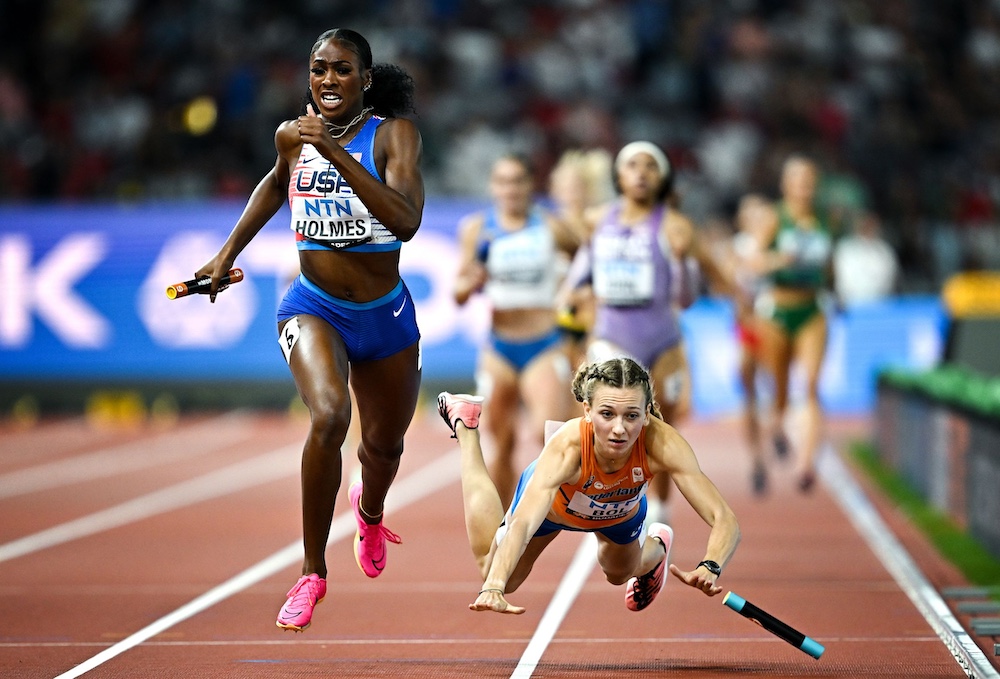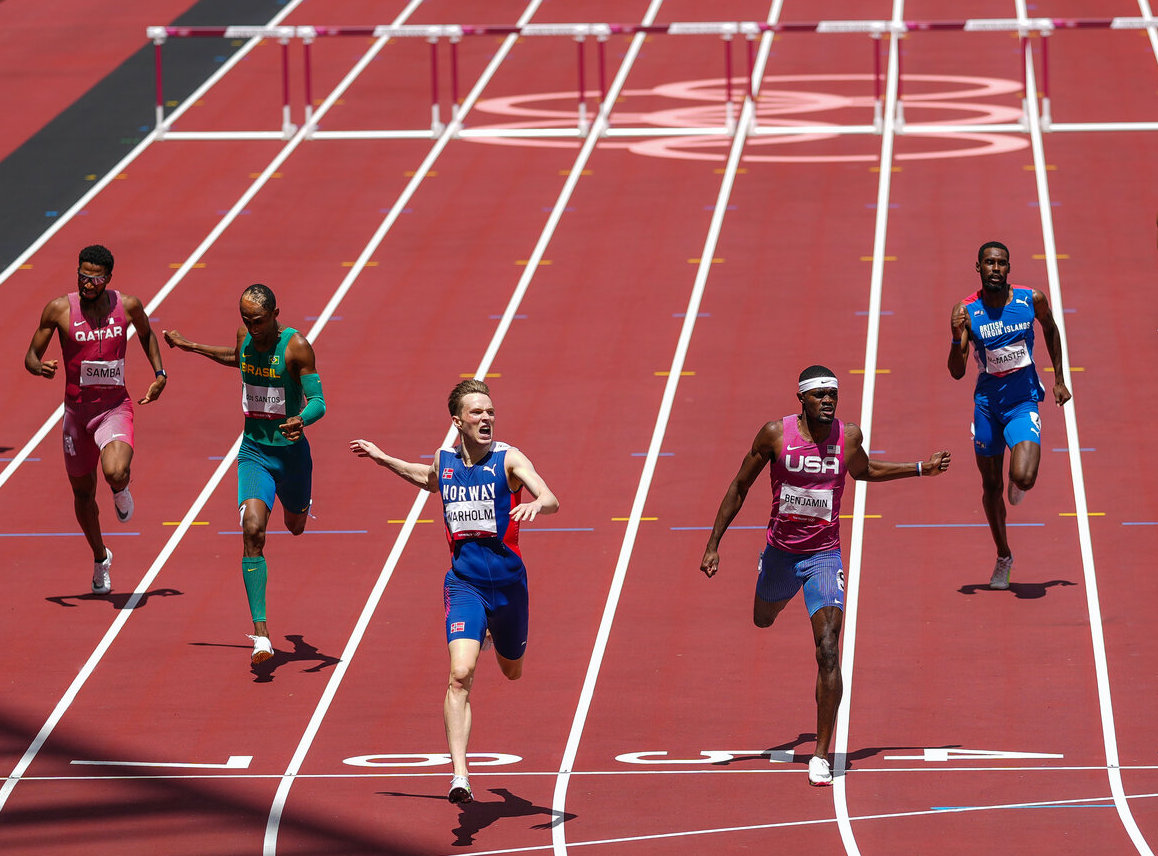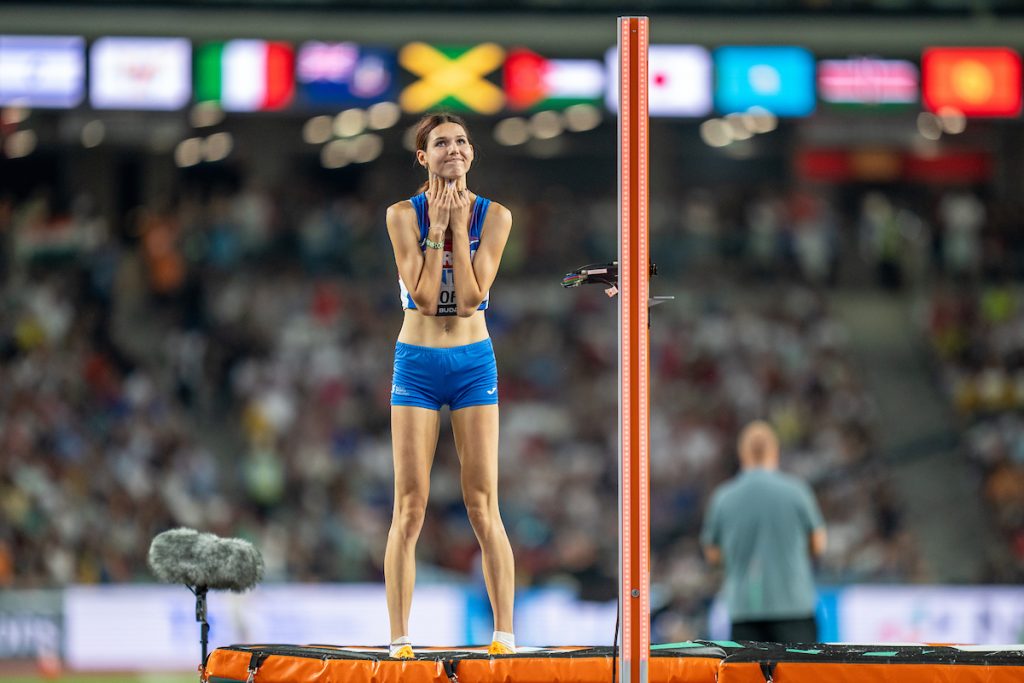I have been waiting for World Athletics to publish the list of finalists for the photograph of the year (initially planned for November 16th) before presenting a summary of this year's finalists. They were one week late with respect to what they had promised. But, let us start with the photos. Only three photos were given in the finalists' list while I would have liked to have access to all those that have been shortlisted. World Athletics promises that there will be a digital exhibition on the website later this month. Given that the end of the month is just one week away, I do not understand why they did not present the shortlisted photos right away. Be that as it may, when they make these photos available, if there are ones I like particularly, I will take care to include them in my article on the WA Athlete of the Year. For the time being, my preferred photo is the one with Bol's fall in the 4x400 m mixed relay.
But I must admit that the photo of Tamberi is also excellent.
The finalists of the Female Athlete of the Year title are
Tigist Assefa
Femke Bol
Shericka Jackson
Faith Kipyegon
Yulimar Rojas
Kipyegon and Jackson were first and second in my selection. I believe that one of those two will win the Athlete of the Year title. All the more so, since Rojas has already won in 2020, Assefa is a newcomer and Bol just won (for the second year in a row) the European title.
The list of the male athletes is
Neeraj Chopra
Ryan Crouser
Mondo Duplantis
Kelvin Kiptum
Noah Lyles
Again Duplantis and Lyles were first and second in my list. But Duplantis won in 2020 and 2022, so, perhaps, WA will choose Lyles this time. (In fact, European Athletics chose Ingebrigtsen for this year's title although Duplantis was among the finalists). Chopra, Grouser and Kiptum are great athletes but I don't think they hold a chance compared to Duplantis and Lyles.
I wrote in my article that sharing the gold medals in the women's pole vault was a display of fair play. And in fact, Moon and Kennedy did appear on the shortlist for the fair-play award. However (and in particular since Moon had received the prize last year), they did not make the list of finalists, which comprises
Daniel Ebenyo
Letesenbet Gidey
Jessica Warner-Judd
My favourite is J. Warner-Judd, who waited and shook hands with the final-placed runner in the women's 10000 m, in Budapest.
Finally, there is the Rising Star Award. In the women's category, the three finalists are
Faith Cherotich
Medina Eisa
Angelina Topic
Topic was my number-one choice (but I am worried that, since she obtained the European title, she may be passed over for the World one). I preferred Haylom over Eisa and I stand by my choice. On the other hand, I realise that I overlooked Cherotich (who will probably win the title) but this is perhaps due to the fact that I had eyes only for the two great champion steeplechasers Chepkoech and Yavi.
In the men's list, one finds
Roshawn Clarke
Erriyon Knighton
Emmanuel Wanyonyi
Knighton is the obvious choice, but he was Rising Star laureate in 2021 and 2022, so I preferred to give him a pass. For me, Wanyonyi is this year's favourite but it's a pity that Tebogo could not be selected according to the World Athletics' criteria.
On December 11 World Athletics will announce the choices for the various awards. And I will definitely report with my comments.









